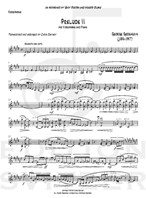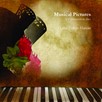
Prelude #2
Composer: George Gershwin
Instrument: Vibraphone and Piano
Level: Advanced
Published: 2019
Price: €20.00
Item details
-
Description +
-
Duration: 5 min.
Transcribed and arranged by Chris Deviney
Program Note
"Gershwin’s Prelude #2 is one of three short piano pieces which were first performed by the composer at the Roosevelt Hotel in New York City in 1926. Each prelude is a well-known example of early 20th-century American classical music influenced by a then burgeoning and truly American style of music loosely called “jazz”. Gershwin dedicated his Three Preludes to his friend and musical advisor Bill Daly.
This transcription is from the Gary Burton & Makoto Ozone recording Virtuosi (2002), two of the greatest virtuosos to ever play their respective instruments.”
-
-
Instrumentation +
-
Vibraphone and Piano
-
-
About the composer +
-
George Gershwin (born Jacob Bruskin Gershowitz, September 26, 1898 – July 11, 1937) was an American composer and pianist whose compositions spanned both popular and classical genres. Among his best-known works are the orchestral compositions Rhapsody in Blue (1924) and An American in Paris (1928), the songs Swanee (1919) and Fascinating Rhythm (1924), the jazz standard I Got Rhythm (1930), and the opera Porgy and Bess (1935) which spawned the hit Summertime.
-
-
Reviews +
-
Review (Percussive Notes, October 2021)“Prelude 2” was composed by George Gershwin in 1926 and blends American classical music with jazz for a lush and bluesy sound. Chris Deviney’s arrangement is a transcription from a recording by vibraphonist Gary Burton and pianist Makoto Ozone. As would be expected, the piece is challenging musically, rhythmically, and technically, but the effort pays off with music that is as lovely as it is evocative of early 20th-century Americana that ends long before you want it to.
The vibraphone part is meant for an advanced player with a strong grasp not only of vibraphone technique, but also jazz vibraphone playing and phrasing. The piece is more of a true duet than a vibraphone solo with accompaniment. There are no pedaling or dampening marks in the score, so the player will need to know where to put those. The piece slips between scalar runs and chordal passages with a lot of grace notes and dynamics that ebb and flow.“Prelude 2” is not a piece with pedagogical intent, but an experienced player could not do better than choosing it for a performance.—Marilyn K. Clark Silva
-
-
Credits +
-
Front Cover design: Gaia Gomes
Photo: Jessica Griffin
Engraving: Chris Deviney
Printed in Copenhagen, Denmark
www.editionsvitzer.com
-








